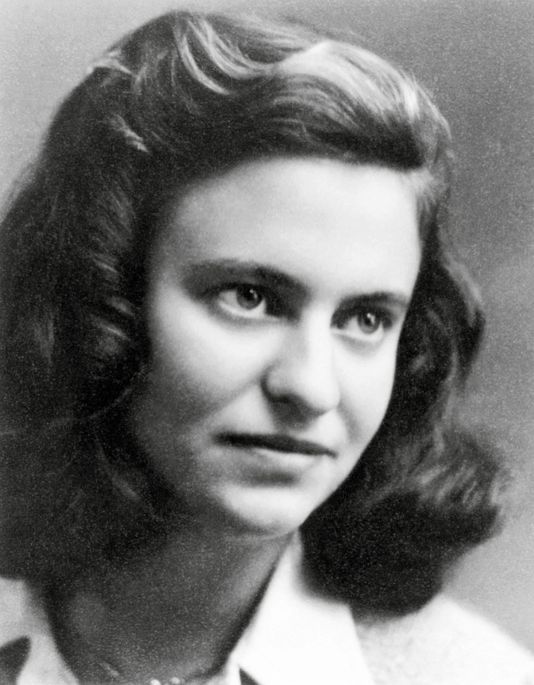Marie-Jo CHOMBART DE LAUWE

Born in Paris on May 31, 1923, Yvette, Marie-José WILBORTS, who would later be called Marie-Jo, arrived in Paimpol and then on the Ile de BREHAT at the age of 12. She joined the Resistance in Brittany against the Nazi occupiers and French collaborators at the age of 17,
In the summer of 1940, German troops landed in Bréhat and requisitioned the houses. At Marie-Jo's house, we listen to the voice of London. Despite the danger, Marie-Jo began carrying messages: "Despite my young age, I didn't do it naively. The executions came very quickly, the context was heavy, we measured the risks." In the autumn of 1941, she began studying medicine in Rennes and obtained an Ausweis (pass), which enabled her to travel through the forbidden zone to the coast to see her parents. She was a member of the "Bande à Sidonie" created by her mother and later integrated into the "Georges France 31" network linked to the British Intelligence Service. Slipped into her anatomy notebooks, coastal defense plans were passed on to the enemy. They were then forwarded to the Allies in England. On May 22, 1942, Marie-Jo was arrested at her landlady's house. In front of the house, a black traction car was waiting for her. She had just enough time to write a note on the kitchen table: "I've been arrested. Notify family and friends. Imprisoned by the German army in Rennes, then in Angers. There she was reunited with her parents and eleven other members of her intelligence and escape network. She was then transferred to the Santé prison for interrogation by the Gestapo. She rubbed shoulders with Marie-Claude Vaillant-Couturier. She was then taken to the Fresnes prison. Marie-Jo is sentenced to death, but her sentence is commuted to Nacht und Nebel (Night and Fog) deportation. The train leaves the Gare de l'Est in Paris on July 26, 1943 with her mother Suzanne and 56 other French NN women in cell cars for the Ravensbrück camp. This group of 58 women is placed in block 32 of the NN, considered missing, with no letters or parcels. Marie-Jo worked in the camp's Siemens factory, secretly making small gifts to support her comrades. Her father, deported to Buchenwald, dies on February 24, 1944. In summer 1944, she was assigned to the Kinderzimmer (children's room). It is difficult to say how many of these children were born during the deportation, but work undertaken by the Fondation pour la Mémoire de la Déportation (FMD) has identified 23 French children born at Ravensbrück, of whom only three survived. Marie-Jo also witnessed the sterilization of Roma and Sintizze women and the medical experiments carried out by Nazi doctors on young Polish resistance fighters in block 32 of the NN. They were transferred with the other NN on March 2, 1945 to Mauthausen, from where they were liberated on April 21. She arrived in Paris on May 1, 1945. At the Liberation, Marie-Jo testified against Fritz Suhren, Ravensbrück camp commandant from 1942 to 1945, who was prosecuted for crimes against humanity. She rebuilt her life and resumed her medical studies. She married Paul-Henry CHOMBART de LAUWE. She once again became an activist in the fight against torture during the Algerian war. In 1954, she joined the CNRS and worked with Professor Heuyer, head of the child psychiatry department at the Salpêtrière hospital. She also wrote about children, having explored the subject in greater depth on her websites (enfant en jeu ). Among other decorations, she was awarded the Grand Cross of the Legion of Honor and honored at the French Senate. An active member of the Ligue des droits de l'homme, she is also a member of the collegial presidency of the Fédération nationale des déportés et internés résistants et patriotes (FNDIRP), co-president of the Amicale de RAVENSBRUCK since 1979 and president of the Fondation pour la Mémoire de la Déportation since 1996, following in the footsteps of Marie-Claude VAILLANT-COUTURIER. Now, after so many years of struggle and testimony, she is resting. Sources archives FMD- Amicale